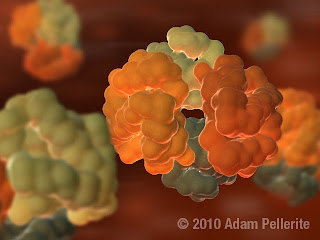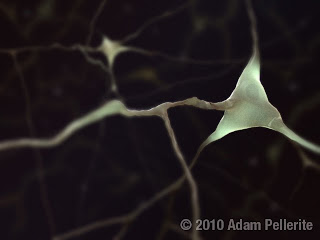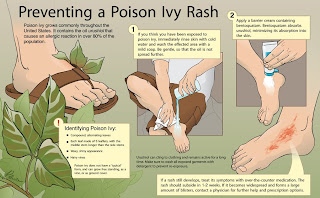Anyways, here are a couple things from my 3D illustration/animation class. I took the course this summer, but just recently finished it up 'officially'. The 3D modeling was done with 3D Studio Max 2010, combination with Discovery Studio Visualizer, which helped convert protein structure data into a basic scaffold to then use in 3DS Max. Post-production for stills was done in Adobe Photoshop, and for the animation in Photoshop and Adobe After Effects (still stuck on CS4 for both).

Hemoglobin! Hand-delivers us oxygen all day every day. With a smile. This still image was done for an early class assignment, when learning to export Protein Database models to 3DS Max for manipulation. It was really just a chance to play around with lighting in 3D and other effects in Photoshop to put together a finished image.

This was for a later assignment where we followed a set of instructions to learn how to manipulate basic shapes into more complex ones. In this case the example was a basic neuron. So the underlying model is technically made by me, but following a specific set of instructions. Where I had my own control was in the placement and look of the dendrites and axons of the nerve. Post-production again done in Photoshop. I would like to re-do this with a more realistic neuron model in the future, but it was fun to learn on.
The final project for the class was a short, simple 3D animated educational video about a protein of our choice. I chose the Arp2/3 protein complex, and animated it in this extremely simplified video. The idea was that I wanted it to be a (fake) part in a series of AP Biology level high school animations that might accompany a textbook. What I have here is actually not the most final version, but I will upload that when I am able. It's basically the same, with only a few minor tweaks. I don't know how I feel about the video. I learned quite a bit making it, but if I did it again I would have done it totally differently. And much better. But it was a fun learning exercise. Models/cameras were done in 3D Studio Max, post-production art in Photoshop, and video editing/compositing done with After Effects.
That's my update for today. I will update more often in the future, along with retroactively getting up some stuff from the past few months too.
























